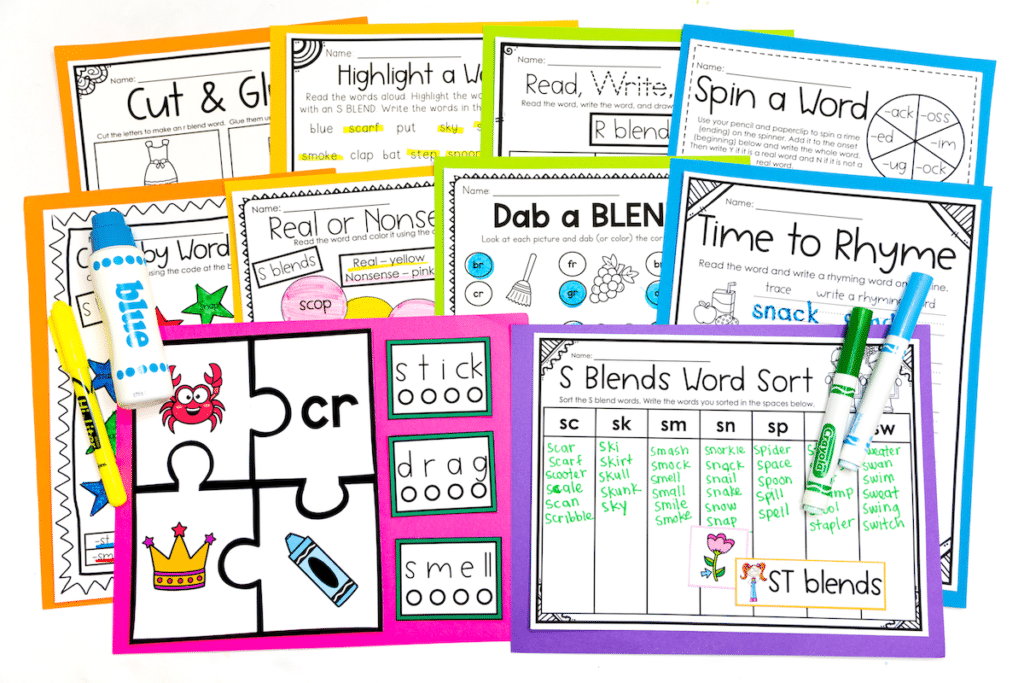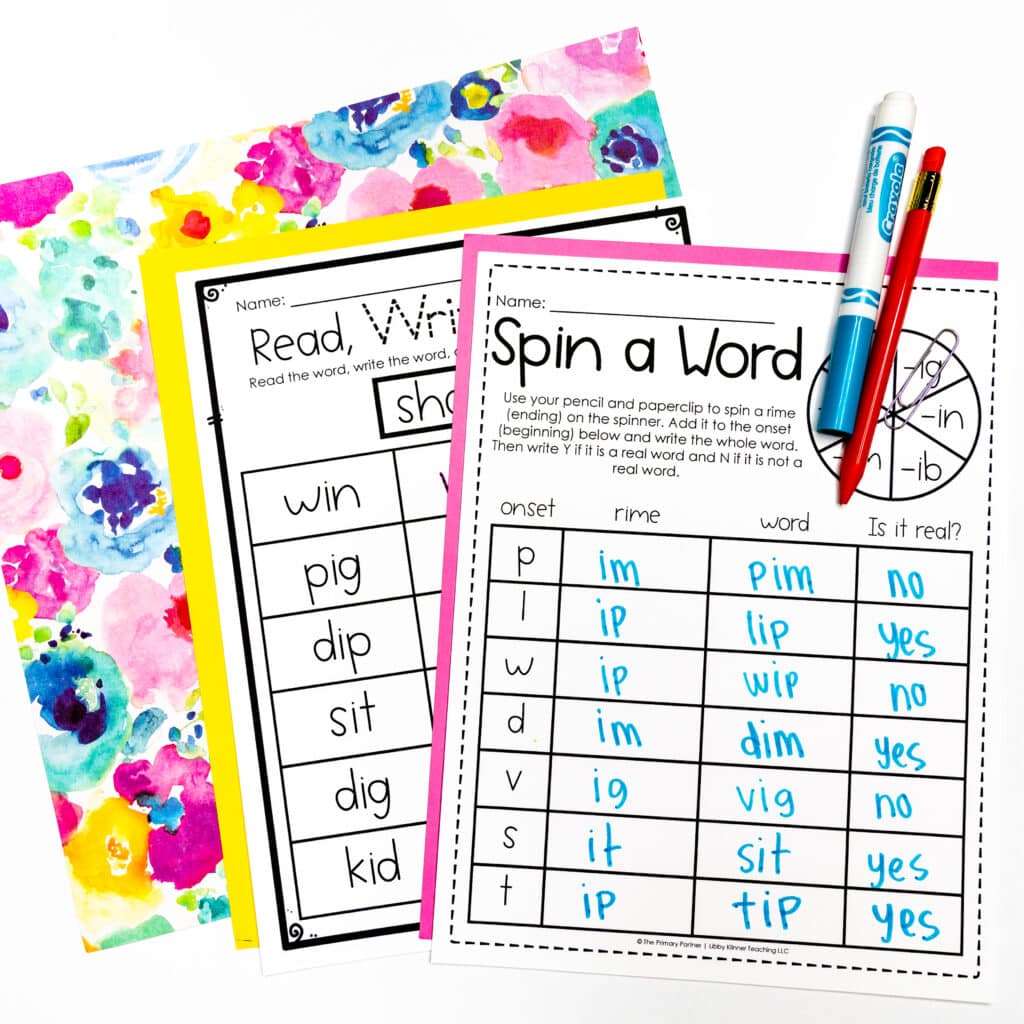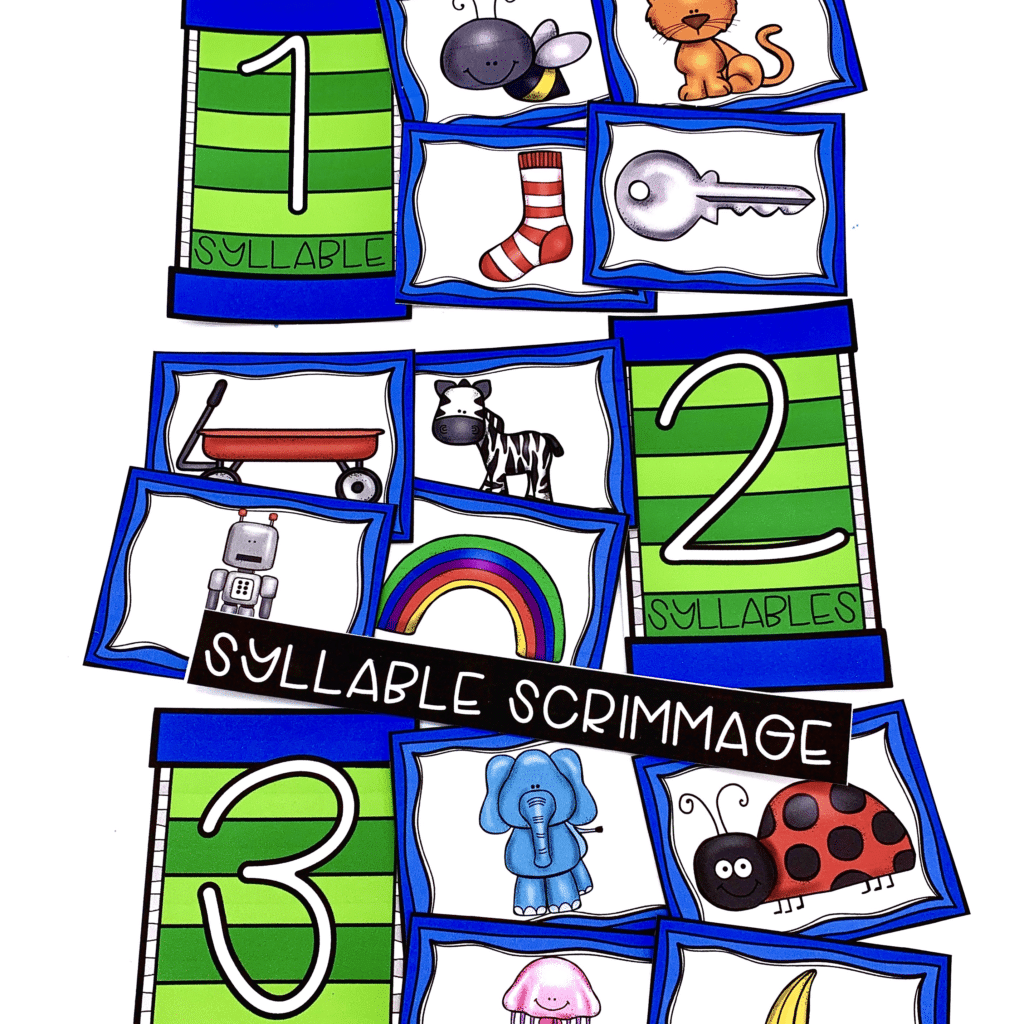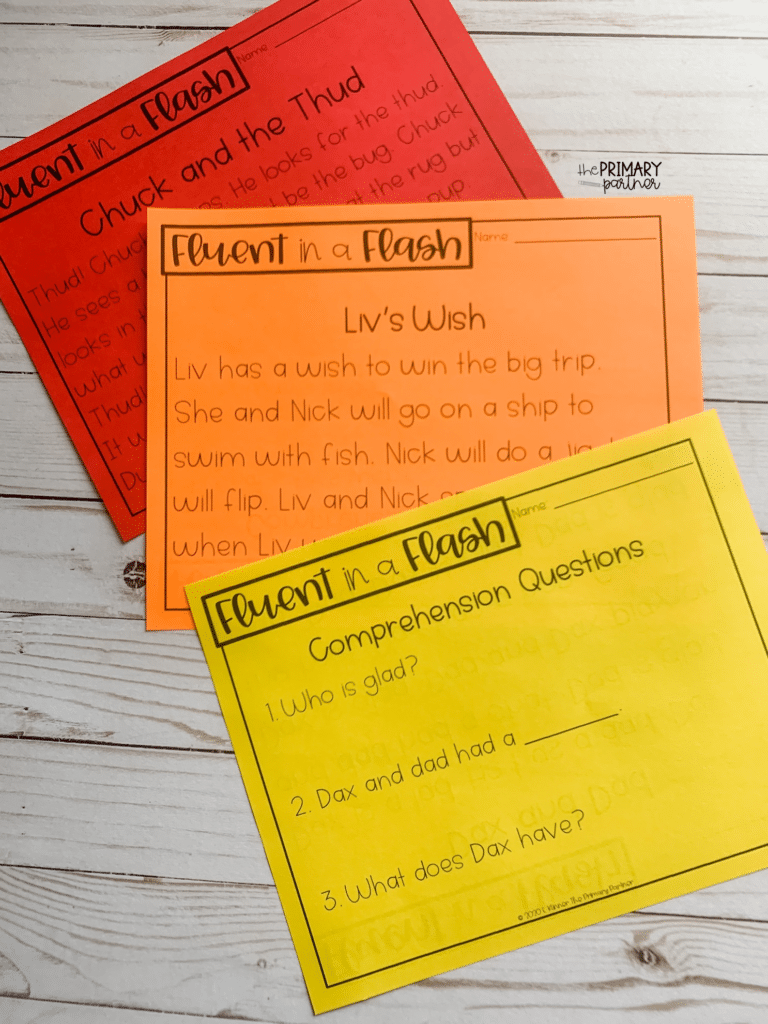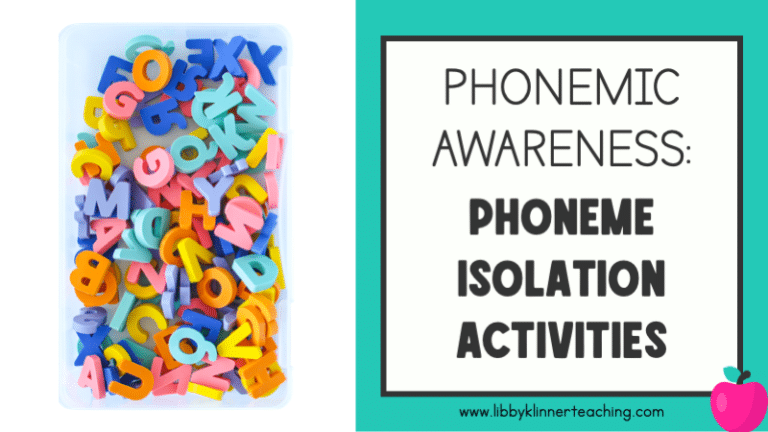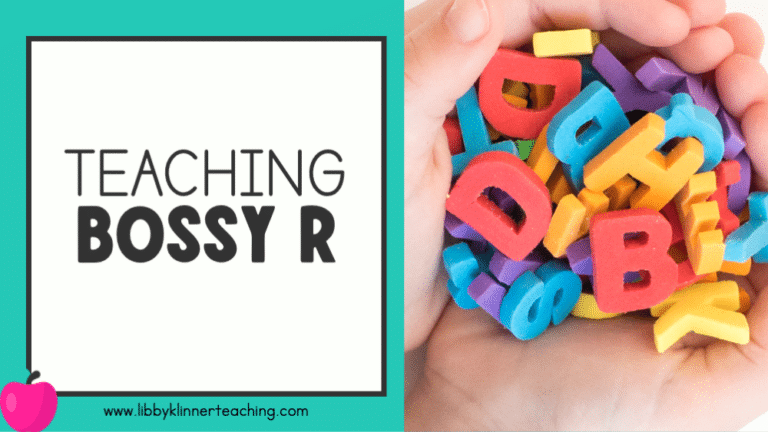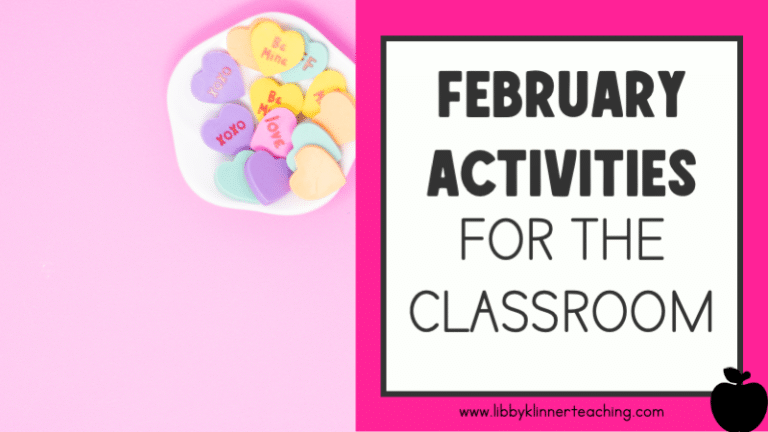Important Literacy Centers for First Grade

Literacy centers are a necessary part of the K-2 classroom because they provide an opportunity for teachers to differentiate instruction for their students. Children also learn to work independently and with partners while teachers work with a small group in literacy centers. It may seem like a lot of work, but literacy centers don’t have to be complicated! Check out these easy ideas to make your literacy centers fun and engaging.
WHAT KINDS OF LITERACY CENTERS DO I NEED?
I like to include activities that focus on the following:
- Phonemic awareness
- Phonological awareness
- Phonics skill/pattern
- Grammar
- Reading Fluency
- Writing
1. PHONEMIC AWARENESS CENTERS
Phonemic awareness is the ability to identify and manipulate individual sounds, or phonemes, in spoken words. For example, the word bat has three phonemes: /b/ /a/ /t/. The word ship has three phonemes, although it is made up of four letters: /sh/ /i/ /p/. Students that demonstrate phonemic awareness can manipulate sounds they hear in spoken words.
I like to use a variety of phonemic awareness activities working with the six layers of PA, which include blending, segmenting, isolation, deletion, addition, and substitution.
These activities ask students to manipulate sounds to build words or make new words.



2. PHONOLOGICAL AWARENESS CENTERS
Phonemic awareness is under the umbrella of phonological awareness. Phonological awareness also includes manipulation of words and parts of words. Activities that ask students to identify rhymes, syllables, onset/rime, and individual words are phonological awareness activities. This practice is increasingly important as students become more experience readers.
3. PHONICS SKILL LITERACY CENTERS
I like to include a center focusing on the phonics skill that we are currently covering in the classroom. Activities for this skill could include:
- reading a passage and identifying words with the phonics pattern
- building words using the phonics pattern
- matching words with the phonics pattern to an image
- sorting words into word families
4. GRAMMAR & LANGUAGE LITERACY CENTERS
Grammar and language are important skills to include in your literacy centers. It offers students another opportunity to work with words. Both are necessary for coherent speaking and writing. I love using task cards for grammar activities, particularly ‘write the room’ tasks so that students can get up and moving.
5. READING FLUENCY
Reading fluency is a student’s ability to read a text with accuracy, speed, and expression. Practicing oral reading will improve a student’s reading fluency. Fluency is an important activity for all ages, but especially for students that are learning to read. Modeling fluent reading is necessary so that students can hear what a fluent reader sounds like.
There are many different ways to incorporate fluency in literacy centers. Students can read passages in different voices, record themselves reading, or read to a partner. It is helpful for students to practice reading familiar text to improve their fluency.
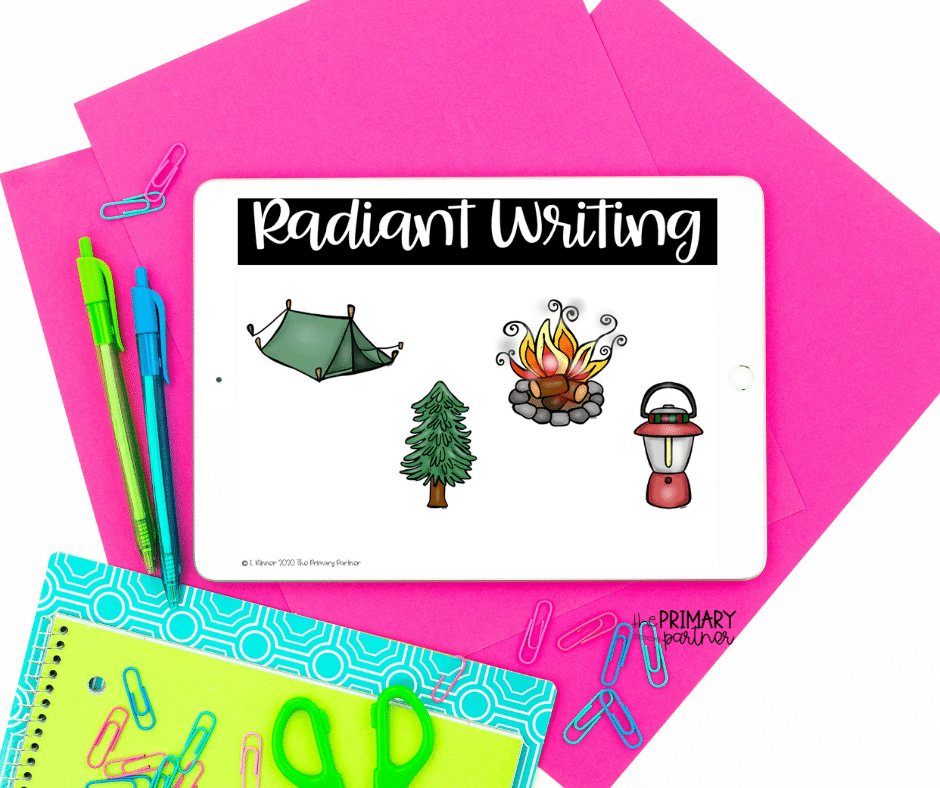
6. WRITING CENTERS
Writing can be such a difficult skill for young learners. They often struggle with knowing what to write about or where to start. It is important to get students accustomed to writing at a young age, whether they are writing in complete sentences or drawing pictures.
To help young writers learn to write on a topic, I like to provide my students with ideas. For example, I provide them with three pictures and they must include those in their story. Or I may give them a stack of cards to choose a character, setting, and action for their story. It is helpful to collect all their writing in a journal or composition book to help them see their progress as the year goes on.



Hi, I’m Libby!
I’m so happy you’re here! I love all things first grade – the curriculum, the content, and the sweet kiddos. I’m passionate about helping K-2 teachers save time in the classroom with fresh ideas and fun, engaging resources.

